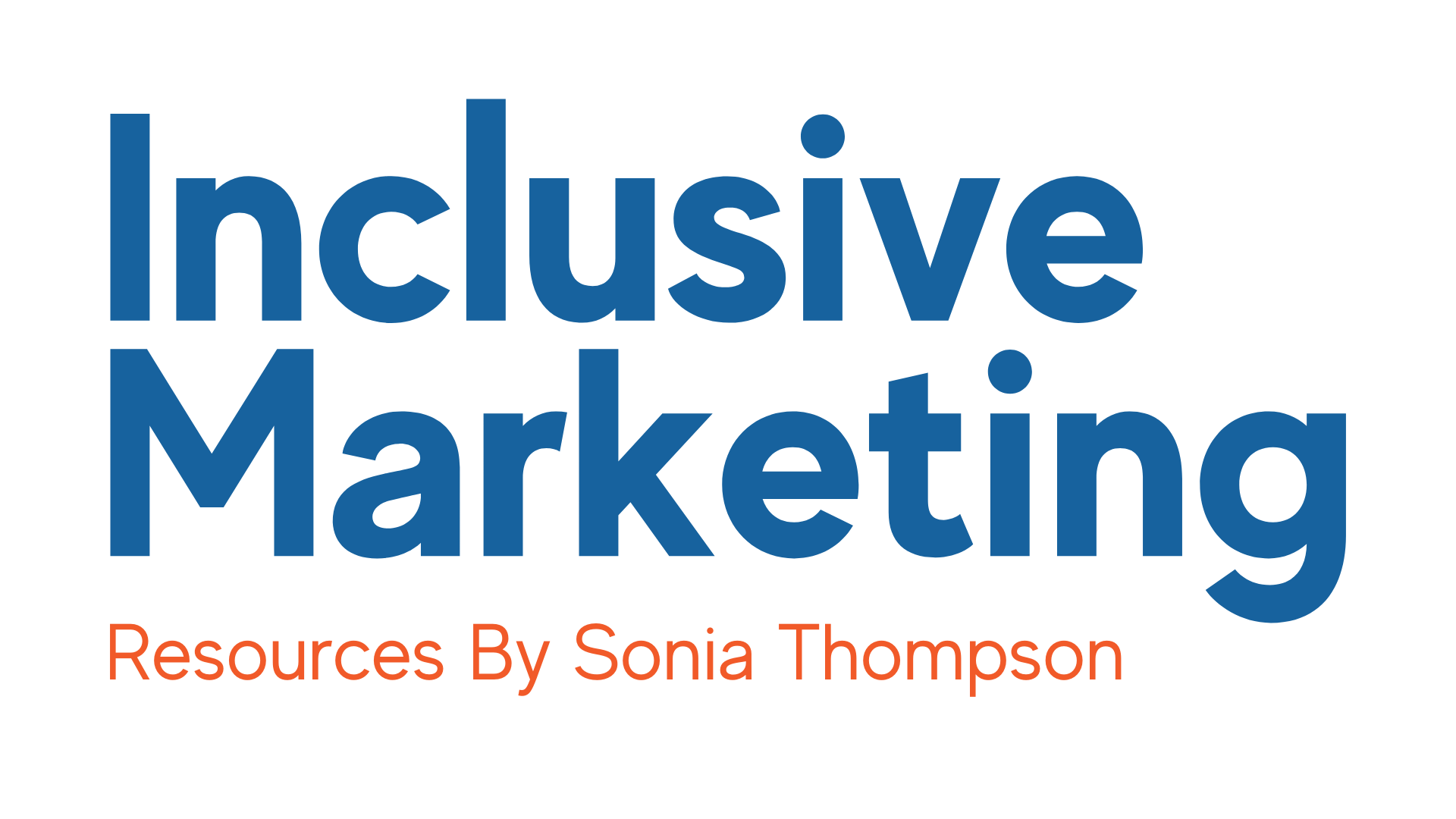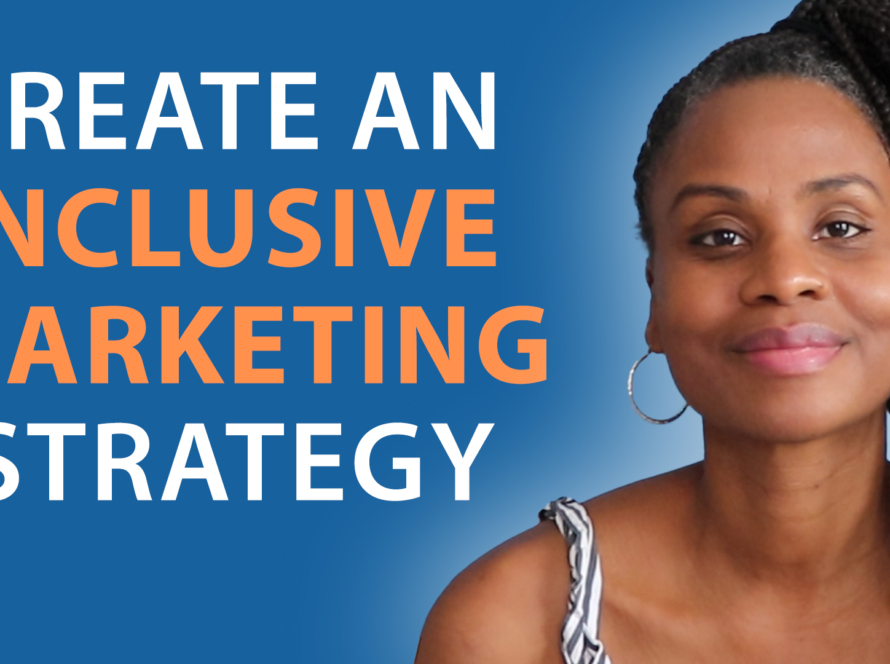There are a number of examples of brands who are doing cool things in the world of inclusive marketing. Today, we’re going to look at one of those more in depth, so you can get some inspiration that you can apply to your work. I’m Sonia Thompson, and through my speaking, writing, content and programs, I’ve guided hundreds of thousands of people all around the world on how to build an inclusive brand that wins the attention, adoration and loyalty of more consumers, especially those most brands ignore. Picture it, Tampa 2017. I’m having a mastermind weekend with some of my girlfriends in my network. And one of them says, “Hey, Sonia, we really need to go to this place that’s got these really delicious cupcakes. And not only that, they come out of a cupcake ATM machine.”
And I’m like, “Wait a minute, wait a minute, wait a minute.” First off, the thing that you should know about me is I’m a cupcake-aholic. I love cupcakes. I can’t get enough cupcakes, but I’m gluten-free. So I had this love for cupcakes all my life, but that love for cupcakes didn’t go away whenever I became gluten-free. The challenge is that a lot of times, gluten-free cupcakes don’t taste so hot. So anyway, as we’re walking to see this great cupcake ATM machine, I am measuring in my thoughts that maybe I won’t get to partake in a cupcake. But at least I can see the ATM machine because I was pretty sure they weren’t going to have any gluten-free cupcakes in this cool thing. But lo and behold, to my delight, we get to the cupcake ATM machine and I start messing around with the interface. And I see not only do they have gluten-free cupcakes, but they have gluten-free red velvet cupcakes.
It was a miracle. I was so excited. And not only did they have gluten-free red velvet cupcakes, they also had vegan cupcakes because one of the other girls who was with us for the mastermind that weekend, she often follows a vegan diet. So she was very excited about that. So anyway, I go through the process and I type it in, I place my order, I stick my credit card in, out pops this cupcake. And it was just… I was so excited. And not only that, whenever I went to eat the cupcake, it was delicious. It did not taste gluten-free at all. It was probably one of the best cupcakes I’ve ever had. What did I do? I immediately got on social media and I started telling the world all about this cupcake ATM machine, how wonderful, how delicious those cupcakes were.
Where Inclusivity Is Involved…Sales Follow
I went the following weekend. I took my sisters, I took my cousin, I took my niece and my nephew to get these cupcakes. I love these cupcakes so much and the experience that they have. When it came time for us to have our US wedding, where did we get our cake from? Just so you know, the brand that I’m talking about is Sprinkles Cupcakes. Definitely check out if they have a cupcake ATM machine and a place near you. So this video isn’t just for me to gush all over how delicious these cupcakes are. It’s to walk you through just a few things that I want to point out to you about Sprinkles’ process and why they’re so inclusive, and some things that you want to think about as you work to build your own inclusive brand.
Intentional Brand Strategy Is King
They are very intentional about who they serve and who they do not. A lot of people have the misconception that inclusive marketing means that you have to serve everybody. That is absolutely not true and we’ll cover that in another video. But Sprinkles is very clear that they serve people who like cupcakes, who might not have any dietary restrictions, but they also serve people who are gluten-free, who are vegan, and who follow a sugar-free diet. They’re very clear. If you go into one of their bakeries, they’ve got it very clearly marked that those are the three different dietary accommodations that they are working to accommodate.
Inclusivity Without Having To Ask? Now, That’s The Key To A Consumers Heart!
The second thing that they’ve done after intentionally choosing who it is that they’re serving and who it is that they’re not, is they have made it so that the experience is one where people don’t have to raise their hand to acknowledge how they are different. So if you go into a Sprinkles bakery, or if you are scrolling on their website to place an order, or if you’re scrolling through the interface for the ATM machine, what you’ll see is they have all their cupcakes and they even have some cookies listed and it’s clearly marked, which ones are gluten-free, which ones are vegan, which ones are sugar-free. And people can self-select easily.
They don’t have to raise their hand and ask for the gluten-free menu. They don’t have to ask for the allergen-friendly menu. They don’t have to ask for any of that. They just say, “I want this particular cupcake,” and it’s given to them. A lot of times, brands will go through the process, and restaurants do this in particular, where they will have the consumers that they’re serving, they’ll have accommodations for them, but they’ll force them to have to raise their hand to let people know that they’re different so that they can get access to it. So if I go to a restaurant, for instance, a lot of times, restaurants will have an allergen-friendly menu that I have to ask the waiter, the waitress for, and they have to bring it over to me.
And then I have to look through and flip through and try and decipher it because sometimes it looks like a periodic table. It’s very confusing. Sprinkles doesn’t have that at all. It’s all clearly marked in the menu. People just say, “I want this. I want that.” There’s no questions asked. No one has to guess whether or not I’m gluten-free or vegan or sugar-free, or if I have diabetes or I have some type of issue. I just might decide that I want this on this day, and that’s all there is to it. I feel normal whenever I go there because I’m able to get the experience just like everybody else. So remember, as you’re serving people with differences, make sure that you think about how you’re going to serve them, how you’re going to accommodate whatever type of need that they have, that you’re doing so in a way that reduces as much friction as possible in the experience that you are delivering, and it makes them feel not like they are different if they don’t want to feel that way.
Customer Experience and Inclusive Marketing Are Inseperable Twins
And a third thing that Sprinkles does is they put intense focus on customer experience. You’ve heard me say this before. Customer experience and inclusive marketing are inseparable twins. They go hand in hand. Sprinkles, of course, they deliver a wonderful, a highly remarkable experience in terms of the cupcake ATM machine. I mean, that’s quite unique. I’ve not heard of any other cupcake brand doing that. So that is wonderful and remarkable on its own. But a lot of times, what will happen is when brands are serving people who have some difference, the experience is somewhat diminished for them. They don’t get to have the experience at the same 100% level that everyone else does.
Thankfully, the makers or the people who are behind the Sprinkles brand didn’t have that. So everybody, whether you’re gluten-free, vegan, sugar-free, you could still experience the cupcake ATM machine. There wasn’t like, “Oh, only select versions are stocked in here.” And also, as I mentioned before, these cupcakes are delicious. They do not taste gluten-free. So I’ve actually had… And that’s just not me saying it. Don’t take my word for it. I’ve had people who are not gluten-free order these gluten-free version of the cupcakes and think, “Oh, my gosh. These are delicious.” They didn’t know the difference.
So a lot of times, like I mentioned, the experience for people who have some difference is diminished. And as a result of that, we feel like we’re paying, or sometimes in some cases, we’re paying extra for items and the experience that we get as a result is subpar. That feels awful. Not only do we have to call out what our differences are, but then we have to pay more for them and for a less than stellar experience. No bueno. No bueno at all. Sprinkles, in this case, does not do that. They keep the experience for the people who have our differences, particularly as it relates to our dietary restrictions, our experience is the exact same as everyone else. It’s no different, it’s not subpar, it’s not substandard. And that’s one of the things that you should be thinking about too, as it relates to the people that you are serving.
How can you make sure that the experience that you are giving them is just as good, is just as stellar, is just as inclusive of them, and keeping account the ways in which they’re different, that it makes them feel like, “Yes, this experience was designed with me in mind,” not as an afterthought, not as something that you felt like you had to do, but something that you took great care in making sure that it was an experience that would be memorable and one we’re talking about and coming back to again and again and again? I want to know, have you ever had an experience where you felt a brand accommodated somebody who had some difference, but the experience was substandard, not ideal, suboptimal? Let’s hear about it in the comments below.
I want to find out more about how other people feel about this and the experiences we have. So we can start educating more brands that this isn’t necessarily the way to go. If you would like even more ideas and assistance on getting started building an inclusive brand, I’ve got you covered. Go ahead and grab my Inclusive Marketing Starter Kit. You can find it at inclusivemarketing.co/starterkit, and it will get you well on your way to building an inclusive brand. Until next time, remember, everyone deserves to have a place where they belong. Let’s use our individual and our collective power to ensure more people feel like they do. Somebody’s waiting on you. Thanks so much for reading.




